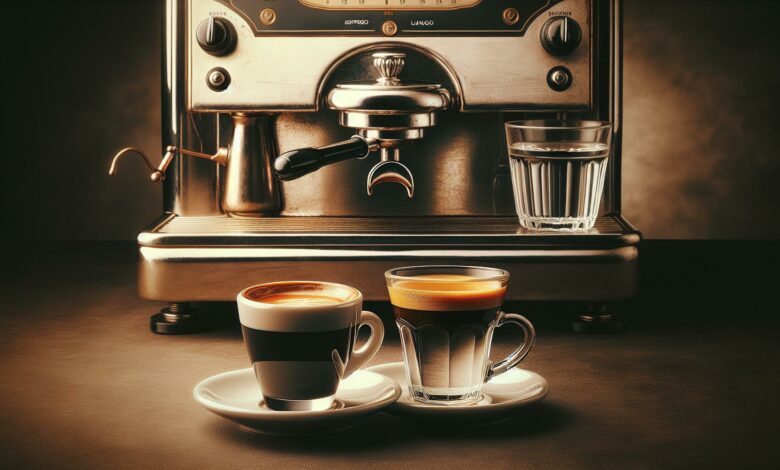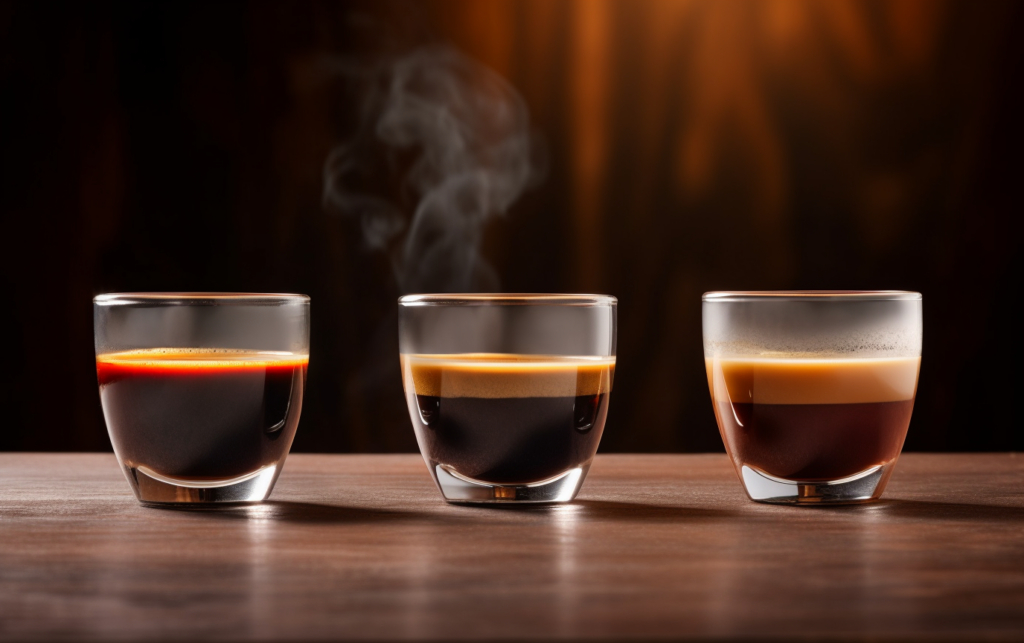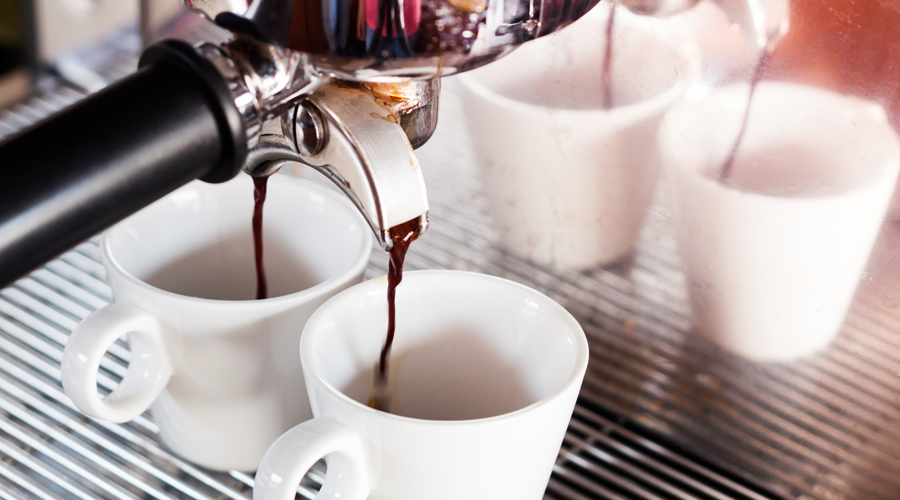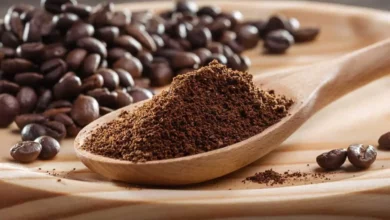What is Lungo Coffee – The What, Why & How To Guide

Diving into the world of coffee, you’ve likely heard about the strong and robust espresso, but what about its lesser-known cousin, the lungo? It’s a variant that’s piqued the curiosity of coffee aficionados and casual sippers alike. With its unique preparation method and distinct taste profile, Lungo Coffee stands out in the vast sea of coffee types.
In this article, you’ll discover the ins and outs of lungo coffee, from the ideal coffee-to-water ratio that sets it apart to the subtle nuances in flavor that might just make it your new go-to. Whether you’re a purist or someone who loves a twist in their cup, understanding lungo coffee will elevate your coffee knowledge and brewing skills. Keep reading to unlock the secrets of this intriguing brew.
What is Lungo Coffee?
Lungo coffee, often overshadowed by its more famous relative espresso, boasts a brewing method that sets it apart in the world of coffee. It’s important for you to understand the nuances that define this unique beverage.
The Basics of Lungo
Lungo coffee is essentially a “stretched” version of espresso, where more water is passed through the grounds. While the word “lungo” means “long” in Italian, referring to the longer extraction time and larger volume, here’s what you need to know:
- Coffee-to-Water Ratio: For lungo, the typical ratio is either 1:3 or even 1:4, depending on personal taste. The table below illustrates a basic comparison of ratios:
| Beverage | Ratio |
|---|---|
| Lungo | 1:3 – 1:4 |
| Espresso | 1:2 |
Variations and Preferences
You might wonder about lungo’s versatility. Yes, it’s possible to tweak your lungo:
- Iced Lungo: Cooling down your lungo on a hot day? Absolutely. Serving it over ice retains its distinct characteristics.
- Lungo con Leche: If you’re inclined to add milk, you’re essentially creating a new variation. While purists prefer it black, don’t hesitate to make it your own.
Caffeine Content and Flavor Profile
Understanding the caffeine content and flavor is key.
It is time to offer something a little different – something stronger and darker, with an edge.
You’ll be intrigued to know that despite the additional water:
- Lungo has more caffeine than espresso, albeit slightly.
The difference lies in the brewing process. Lungo’s flavor profile is also noteworthy:
- More Bitter Taste: More water equates to a longer extraction time, resulting in a bitter flavor.
- Less Intense: For those who find espresso too strong, lungo offers a milder option without sacrificing the essence of the beans.
By paying attention to these details, you’ll appreciate the unique place lungo coffee holds in the coffee spectrum and you’ll be well-equipped to brew a cup that suits your palate.
Brewing Lungo Coffee
Choosing the Right Coffee Beans
When it comes to lungo, the choice of coffee beans can dramatically impact your cup’s flavor profile. You’ll want to select beans that compliment the lungo method’s unique characteristics:
- Opt for 100% Arabica beans for a smoother, less bitter lungo
- Explore single-origin beans from various regions to find your preferred taste
- Robusta beans will offer a more intense flavor, which might be too strong for a traditional lungo
Beans from different regions contribute distinct flavors:
| Region | Flavor Notes |
|---|---|
| South America | Nutty, sweet |
| Africa | Fruity, floral |
| Southeast Asia | Spicy, earthy |
Grinding the Beans
Grinding is a critical step, as it affects the extraction rate and hence the taste of your lungo:
- Aim for a coarser grind than espresso, but not as coarse as drip coffee
- Use a burr grinder for consistency which is vital to avoid over-extraction
- Freshly ground beans are best, so grind right before you brew
Water Temperature and Ratio
The quality of your lungo also hinges on water temperature and coffee-to-water ratio. Here are the details you need to dial in:
- Temperature should be between 90 to 96 degrees Celsius for optimal extraction
- The coffee-to-water ratio for lungo ranges between 1:3 to 1:4
- Use filtered water for a cleaner taste
Brewing Time and Pressure
Finally, the brewing time and pressure are where your coffee meets its maker, literally. Keep these tips in mind:
- Time your shot for 50 seconds to achieve the lungo’s signature profile
- Ensure that the espresso machine provides consistent pressure throughout the extraction
- Stir the Lungo after brewing to integrate all the flavors together
Remember, while bags of coffee might offer instructions, your palate is the ultimate guide. Adjust these factors to find the balance that’s just right for you. Keep experimenting with different brewing times and ratios until your lungo is precisely how you love it.
What does lungo coffee taste like?

Diving into the taste profile of lungo coffee, you’ll notice its subtle nuances compared to its espresso and Americano counterparts. Here’s what you can expect when sipping on a lungo:
- Subtler Taste: Lungo coffee is characterized by a more subtle taste than a traditional espresso due to the increased water volume.
- Bitter Undertones: Because the extraction time is longer, bitter components are more present, giving the lungo a distinct edge.
- Smoky Hints: The prolonged extraction pulls out different flavors, including smoky notes that you might not find in other espresso-based beverages.
If you find the flavor profile of lungo coffee a tad too strong, here’s a quick tip: add a sweetener or a splash of milk to suit your taste. Traditionally though, milk isn’t added to lungo as it’s enjoyed black, but it’s your cup of coffee. If you’re looking for creaminess, a latte or cappuccino might better fit your taste preferences.
| Lungo Characteristic | Comparison |
|---|---|
| Taste | More subtle than espresso |
| Undertones | Bitter |
| Aroma | Smoky hints |
| Traditional Serving | Black |
Contrasting lungo with similar drinks, an Americano involves adding water to a shot of espresso, while a long black consists of pouring espresso over hot water. This post-extraction addition of water creates a significant difference in flavor:
- Americano: A lighter taste, more akin to drip coffee.
- Long Black: More crema and pronounced espresso flavor.
Espresso machines for home use come with a range of features and precision, some even with a preset for lungo. You simply prepare your grounds, and let the machine handle the extraction. Remember, the goal is to craft a cup that resonates with your taste buds, so feel free to experiment with the grind, water ratio, and extraction time to make your lungo experience uniquely yours.
Serving Lungo Coffee

When you’re preparing to serve lungo coffee, the details make all the difference. Whether you’re enjoying it at home or serving it to guests, attention to the right cup, additions like milk or sugar, and serving temperature can elevate your lungo experience. You want to ensure that every sip is as satisfying as the last.
Choosing the Right Cup
Selecting the appropriate cup isn’t just about aesthetics; it impacts how you experience the coffee’s temperature and flavor profile.
- Material Matters: Glass or ceramic cups are ideal as they maintain temperature well.
- Size Specifications: Aim for a cup that holds 6 to 8 ounces which is the perfect size for a lungo, allowing some extra room for any additions if preferred.
Here’s a brief guide on cup choices relevant for a lungo serving:
| Material | Size | Notes |
|---|---|---|
| Glass | 160ml | Double-wall cups are excellent for heat retention. |
| Ceramic | 80ml | Thick walls help to keep the coffee warm. |
| Fine China | 40ml | Smaller but elegant for double-shot servings. |
Remember, if you’ve got a set of cups from a specialty coffee brand, now’s the time to use them. Their design often complements the drinking experience.
Adding Milk or Sugar
Personalizing your lungo to taste can involve adding a dash of milk or a teaspoon of sugar.
- Milk: A splash can soften the bitterness. If you prefer a creamier coffee, consider using frothed milk instead.
- Sugar: A small amount can enhance the natural flavors of the coffee without overpowering them. Preference varies widely here, so adjust to taste.
If unsure about proportions, start with this baseline and adjust according to your personal preference:
| Addition | Amount | Note |
|---|---|---|
| Milk | 1-2 tbsp | Gradually add more if needed. |
| Sugar | 1 tsp | Can increase slightly for a sweeter taste. |
Serving Temperature
Temperature is crucial for fully appreciating the lungo’s flavor profile.
- Optimal Range: Serve lungo coffee immediately after brewing, ideally between 160°F to 175°F.
- Avoid Reheating: Reheating can degrade the flavors, so it’s best to brew fresh if the coffee cools down.
- Preheat Your Cup: If you rinse your cup with hot water before serving, your coffee will maintain its temperature longer.
This table sums up the key serving temperatures:
| Phase | Temperature (°F) |
|---|---|
| Brewing Temp | 195°F to 205°F |
| Serving Temp | 160°F to 175°F |
| Preheat Temp (Cup) | ~150°F |
By maintaining these temperatures, you ensure every lungo you serve is at its best in terms of flavor and warmth.
Different Types of Lungo Coffee

When you’re faced with the decision of what type of lungo to try during your next coffee break, you might be surprised by the variety available. Each type of lungo carries its own distinct characteristics and subtleties influenced by the beans used and the roasting process.
- Single-Origin Lungo: As the name suggests, these coffees are sourced from one location, showcasing the unique traits of their region. They can offer an intriguing insight into the taste profile particular to that area.
- Blend Lungo: Creatively crafted by combining beans from multiple regions, blends provide a balanced flavor profile with a complexity that single-origin coffees might lack.
Let’s dive a bit deeper:
Single-Origin Lungo
| Region | Flavor Notes |
|---|---|
| South America | Nutty, mild chocolate |
| Africa | Fruity, floral notes |
| Asia | Earthy, spicy tones |
By selecting a single-origin lungo, you’re getting a purist coffee experience that is unadulterated by the mixing of beans. Your taste buds will travel to the coffee’s origin, experiencing flavors that are as unique as the soil and climate where the coffee was grown.
Blend Lungo
The blending of beans creates a consistent taste that often showcases the best attributes of each type of bean used. A masterfully crafted blend can enhance the flavor profile, achieving a well-rounded lungo that is both memorable and delightful.
- Light Roast Blends: Expect a milder, brighter cup with hints of acidity.
- Medium Roast Blends: Balances acidity and body, often with chocolate or caramel undertones.
- Dark Roast Blends: Yields a robust, bold flavor often with a bittersweet finish that prolongs the tasting experience.
Remember, when choosing your lungo, the water plays a pivotal role in your brew. Filtered water is recommended, sitting at a temperature of 78 degrees to extract the best possible flavor. If you’re making adjustments to your coffee-making process, keep a close eye on the bean type and the water quality; it’s the subtle changes that make the biggest differences.
Who should drink lungo coffee?
When considering who might enjoy lungo coffee, it’s important to understand your own taste preferences and how they align with the distinct qualities of this beverage.
- If espresso tastes too strong for you, lungo may be your go-to cup. It maintains the intensity of espresso but dilutes the bitterness, delivering a smoother taste.
- Those who appreciate a hot beverage for longer will find lungo particularly appealing as it offers a more extended coffee experience than a quick-shot espresso.
- Coffee aficionados keen on exploring nuances in flavor from different beans and regions will relish lungo’s ability to showcase more subtle notes, thanks to the higher water content.
- If you’re the type who likes to sip leisurely on your coffee while working or reading, the lungo’s larger volume makes it a perfect companion.
Lungo may not be the traditional choice for everyone, but consider trying it if you resonate with the following:
- Enjoy lighter-bodied coffee
- Prefer less acidity in your drink
- Intend to avoid adding milk or sugar
- Seek to lower your caffeine intake per sip, compared to a standard espresso
Here’s a quick breakdown of the types of coffee drinkers and their usual preferences:
| Coffee Preference | Likely to Enjoy Lungo? | Reason |
|---|---|---|
| Strong & Intense | No | Lungo is milder than traditional espresso |
| Smooth & Mild | Yes | Diluted bitterness and milder taste |
| Leisurely Sipper | Yes | Larger volume extends drinking time |
| Flavor Explorer | Yes | Extended extraction reveals more notes |
If you fit into any of these categories, or are simply curious about diverging from your regular coffee routine, lungo might just suit your palate. While espresso delivers a powerful punch of caffeine in a small volume, lungo offers a more balanced approach—allowing you to enjoy your coffee moment just a bit longer.
Lungo vs Americano
When you’re delving into espresso-based drinks, understanding the distinct characteristics of each type is key to perfecting your coffee experience. You might think a lungo is quite similar to an Americano or a long black, yet the preparation process sets them apart, altering flavor significantly.
Understanding the Preparation
In preparing a lungo, your shot is pulled using double the volume of water compared to a standard espresso. For an Americano, however, hot water is added to a brewed espresso shot. This distinctive method of preparation impacts not only the strength but also the subtle flavor nuances in each cup.
The Taste Difference
The extra water in a lungo allows for more extended extraction, offering a unique tasting experience. You’ll notice a less concentrated coffee with more nuanced flavors like caramel and nuts, and an enhanced natural bitterness.
| Drink | Water Used | Flavor Notes | Serving Size |
|---|---|---|---|
| Lungo | Double (During Brew) | Caramel, Nuts, Bitterness | 3-4 oz |
| Americano | Added After Brew | Closer to Drip Coffee | 6-8 oz |
A lungo, being closer in taste to an espresso but less intense, offers a wider spectrum of flavors extracted during the brewing process. With an Americano, the addition of water post-extraction dilutes the espresso somewhat uniformly, bringing it closer in taste to a traditional drip coffee than to an espresso.
Equipment and Convenience

For those with espresso machines at home, a lungo might be just a button press away. Many machines come equipped with a preset lungo option, allowing for ease and consistency. Simply prepare your coffee grounds as you would for an espresso, and the machine does the rest.
The method you choose depends on your taste preference and the kind of coffee experience you’re seeking. Whether it’s the nuanced flavor of a lungo or the milder taste of an Americano, there’s a world of espresso-based beverages for you to explore.
Lungo vs espresso
When you’re exploring different types of coffee, you might stumble upon the terms lungo and espresso. While they share similarities, they’re distinct in preparation and taste.
Preparation Process
What sets apart a lungo from an espresso is essentially the water volume used:
- Espresso: Known for its quick extraction, using less water and finely-ground beans to create a small, potent shot.
- Lungo: Uses more water, which is pushed through the coffee grounds for a longer duration.
Flavor and Caffeine Content
The difference in water content not only has an impact on taste but also on caffeine concentration:
| Drink | Flavor Profile | Caffeine Content |
|---|---|---|
| Lungo | More nuanced, less intense | Slightly higher |
| Espresso | More robust, intense flavor | Slightly lower |
- Espresso: Offers a powerful taste experience, with a body that’s rich and creamy.
- Lungo: Tends to be less concentrated, allowing the subtleties like caramel and nuts to shine through, alongside its natural bitterness.
Remember, more water doesn’t necessarily mean less caffeine. In fact, pulling a lungo correctly extracts just a bit more caffeine than an espresso. So if you’re looking for a slightly more caffeinated alternative to espresso that also offers a less intense taste, lungo could be your go-to choice.
Personal Preference
Ultimately, the decision between a lungo and an espresso boils down to your personal preference:
- If intensity and a bold coffee flavor are what you crave, an espresso shot might be your ideal choice.
- On the other hand, if you prefer your coffee to have a more balanced flavor and feel less overpowered by the rich taste, then trying out a lungo can be an excellent experiment.
Lungo vs Ristretto

When you’re delving into the realm of espresso-based drinks, understanding the nuances between a Lungo and a Ristretto becomes key. Here’s what sets them apart:
Flavor Profile and Strength
| Coffee Type | Flavor Profile | Strength (Intensity) |
|---|---|---|
| Lungo | Varied – Caramel and Gingerbread, Sweet Cereal, Malty Toasted, Flowery, Roasted, Malted Cereal | Ranges from 4 to 9 (depending on the specific Lungo type) |
| Ristretto | More concentrated, slightly sweeter than espresso, less bitter, more floral notes | More potent in flavor compared to a regular espresso shot, but with slightly less caffeine |
Despite their differences, both Lungo and Ristretto shots originate from the espresso machine, crafted with particular brewing times and water ratios that define their distinctive tastes.
Brewing Ratios and Times
The table below illustrates the stark differences in coffee-to-water ratios and brewing times for Lungo, Espresso, and Ristretto:
| Drink | Coffee-to-Water Ratio | Estimated Brewing Time |
|---|---|---|
| Ristretto | 1:1 | ~15 Seconds |
| Espresso | 1:2 | ~25-30 Seconds |
| Lungo | 1:4 | ~60 Seconds |
The Ristretto stands out with its 1:1 ratio and rapid 15-second brew time, producing a small yet potent shot. In contrast, the Lungo stretches the experience, pushing water through the grounds for about a minute to yield a drink with deeper complexity and a 1:4 ratio.
Drink Variations
A Lungo or Ristretto can become the base for a variety of coffee beverages. For instance, your latte might typically contain an Espresso shot, but you can substitute it with a Lungo for a milder flavor or a Ristretto for an intense kick. These are subtle choices that greatly influence the final taste of your drink.
- Lungo can offer a less robust foundation for milk-based drinks.
- Ristretto adds a punchier espresso hit, even when diluted with milk and foam.
Conclusion
Diving into the world of lungo coffee, you’ve uncovered the subtle yet distinct differences that make it stand out from its espresso and ristretto counterparts. You now know the nuances of brewing a perfect lungo and how it unlocks flavors that might otherwise be overshadowed by the intensity of a traditional espresso. Whether you’re looking for a gentler introduction to specialty coffee or simply seeking to expand your coffee horizons, lungo presents a unique experience. Armed with this knowledge, you’re ready to savor the milder, yet equally satisfying, essence of lungo coffee in your next cup.
Frequently Asked Questions
Do you add milk to lungo?
No, traditionally lungo coffee is served black in the Italian style. However, if you prefer milk in your coffee, you might enjoy a latte or another milk-based coffee drink instead.
Does lungo taste like coffee?
Yes, lungo tastes like coffee but with a more balanced, less concentrated flavor than espresso, due to its higher water-to-coffee ratio, typically 1:4.
What is a doppio coffee?
A doppio is a double shot of espresso made using twice the amount of ground coffee in a larger portafilter, resulting in about 60 ml (2 US fl oz) of drink, which is double the size of a single espresso shot.
Does Starbucks do lungo shots?
Yes, you can request a lungo shot at Starbucks. Lungo shots are pulled for a longer time than traditional espresso, leading to additional flavor compounds being dissolved and a slightly more bitter taste.
What is a long black called in England?
In England, what is known as a “long black” refers to an espresso shot poured over hot water, which is the reverse of an “Americano,” where hot water is added after the espresso. Lungo, meaning “Long” in Italian, is a lengthened espresso.
